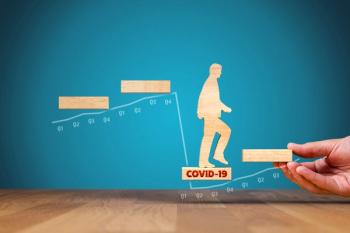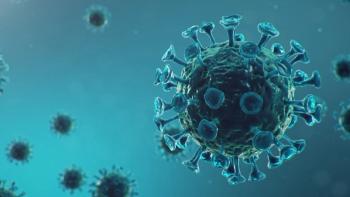
COVID-19 Wastewater Data Matched Case Counts in 2022
Although wastewater data and COVID case/hospitalization rates no longer accurately reflect each other, researchers suggest wastewater surveillance may be the best metric for monitoring the amount of circulating virus.
COVID-19 wastewater data was accurately reflected in coronavirus cases and hospitalization rates reported in early 2022 during the surge of the Omicron variant.
However, the association of wastewater metrics and reported cases soon became unrecognizable as home testing and vaccination increased.
Authors of a study recently published in the JAMA Network Open sought to examine this association of county-level wastewater metrics with high case and hospitalization rates nationwide.1
To the author’s knowledge, this cohort study with a time series analysis is the first to examine CDC-generated wastewater metrics from sewersheds located throughout the nation.
Researchers conducted the study from January to September 2022 in 268 United States counties within 22 states participating in the U.S. Centers for Disease Control and Prevention’s National Wastewater Surveillance System (NWSS).
It was found that in the first quarter of 2022, use of the wastewater percentile detected high reported case (area under the curve [AUC], 0.95; 95% CI, 0.94-0.96) and hospitalization (AUC, 0.86; 95% CI, 0.84-0.88) rates.
Across the first three quarters of 2022, the percentage change metric performed poorly, with AUCs ranging from 0.51 (95% CI, 0.50-0.53) to 0.57 (95% CI, 0.55-0.59) for reported new cases, and from 0.50 (95% CI, 0.48-0.52) to 0.55 (95% CI, 0.53-0.57) for hospitalizations.
The Youden index was used in the study for detecting high case rates, which resulted in a wastewater percentile of 51% (sensitivity, 0.82; 95% CI, 0.80-0.84; specificity, 0.93; 95% CI, 0.92-0.95). A model inclusive of both metrics performed no better than using wastewater percentile alone, the study said.
The performance of wastewater percentile declined over time for cases in the second quarter (AUC, 0.84; 95% CI, 0.82-0.86) and third quarter (AUC, 0.72; 95% CI, 0.70-0.75) of 2022.
The decline found in the remainder of the year was overall caused by fewer patients who accessed diagnostic testing, the increase in vaccination rates, antiviral treatment, population immunity and changes in variants which made the infection less severe.
Though wastewater data and COVID case/hospitalization rates no longer accurately reflect each other as they did in that first quarter of 2022, authors suggest wastewater surveillance may be the best metric for monitoring the amount of circulating virus as home testing increases and disease acuity decreases because of vaccination and treatment.
The CDC’s NWSS was launched in 2020 to coordinate and build the nation’s capacity to track the presence of SARS-CoV-2 in wastewater samples collected across the country.
The NWSS works with health departments to track SARS-CoV-2 levels in wastewater so communities can act quickly to prevent the spread of COVID-19.
According to the CDC, wastewater surveillance does not depend on people having access to healthcare or to COVID testing, unlike other types of COVID surveillance.
This type of surveillance can also be implemented in many communities since nearly 80% of U.S. households are served by municipal wastewater collection systems.
The virus can then be detected in wastewater by enabling wastewater surveillance to capture presence of SARS-CoV-2 shed by people with and without symptoms, according to the CDC.
Detecting the virus allows wastewater surveillance to serve as an early warning that COVID-19 is spreading in a community. Though to date, surveillance can also indicate if COVID is decreasing in a community.
However, as of May 2023, the CDC discontinued collated public sharing of COVID-19 cases by county but do continue to update NWSS data.
Though, in a future pandemic, until stable testing rates are achieved and sufficient data on the severity of an infection is gathered, authors suggest wastewater surveillance may be the best and early signal of a local outbreak, as well as the best method to monitor circulating variants.
Reference
1. Varkila MRJ, Montez-Rath ME, Salomon JA, et al. Use of Wastewater Metrics to Track COVID-19 in the US. JAMA Netw Open. 2023;6(7):e2325591. doi:10.1001/jamanetworkopen.2023.25591
Newsletter
Pharmacy practice is always changing. Stay ahead of the curve with the Drug Topics newsletter and get the latest drug information, industry trends, and patient care tips.




